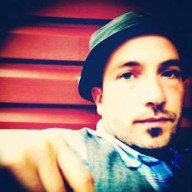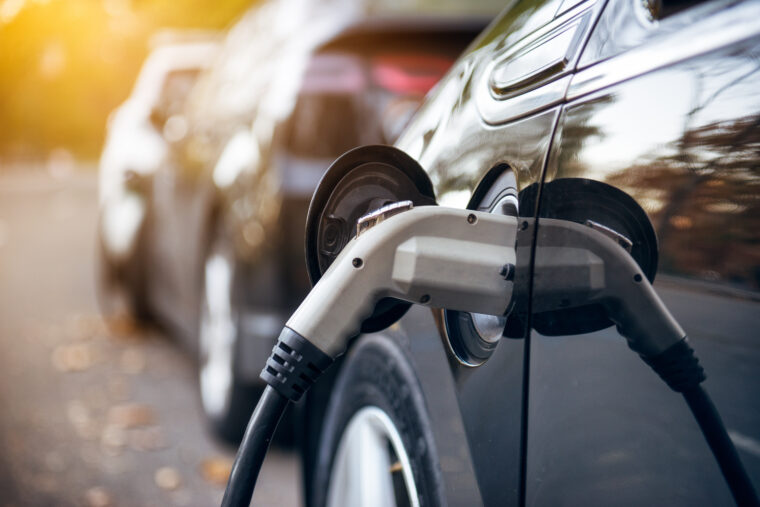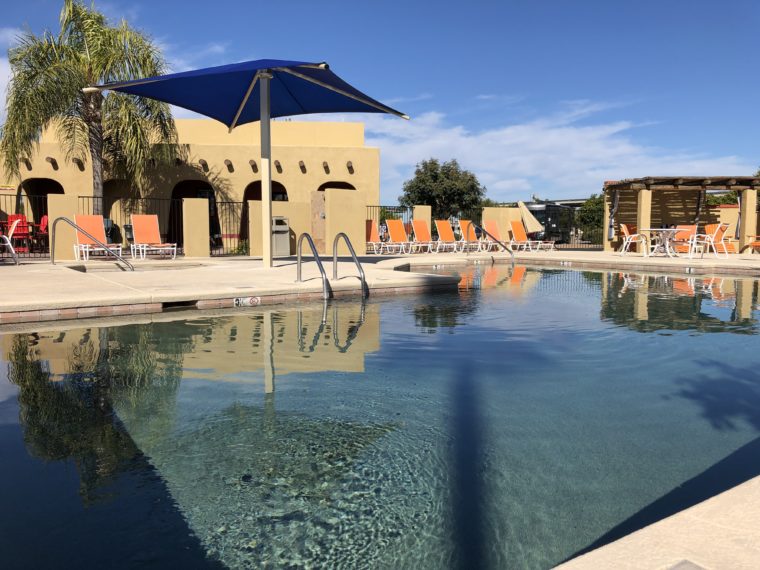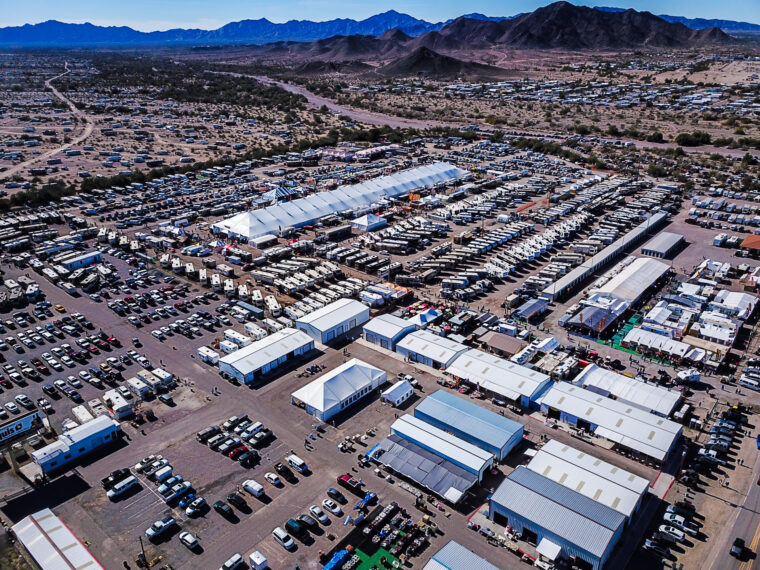Where Oregon is a playground of lush mountains, rugged coastlines and endless high deserts, the State of Washington is more like the set of American Ninja Warrior. The states share similar terrain but with everything just a bit “more” in Washington. Mount Rainier, standing tall at over 14,000′ in elevation, is head and shoulders above Oregon’s Mt. Hood. While both states play home to a similar coastline–tall trees dangling from cliffs lined with driftwood and high crashing waves—where the Oregon Coast is dotted with charming small towns, Washington’s coast is still largely uninhabited, and requires trips inland and back seaward to visit all of them. Even Seattle, the state’s largest city, dwarves Oregon’s Portland by 100,000 people or so.
Indeed, Washington is a place of high adventure that isn’t always easy to get to, but certainly worth the trip once it’s been made.
Camping on the Olympic Peninsula
Forested campsites tucked into river bends, volcanic mountains casting shadows over soaring kingfishers, Washington is archetype camping.
For all of the Pacific Northwest’s dramatic landscapes, the Olympic Peninsula is perhaps the wildest. A massive Mount Olympus rises from sea level to nearly 8000′, its western slope considered the wettest place in the continental US. Titans live here, some in the form of ancient trees, others as waterfalls, all in submission to their volcano overlords. Salmon live and die in their uphill battle to revisit their original delivery room so their own spawn can one day carry on the same tradition, while eagles perch pristine from branches larger than most trees found elsewhere in the world, when not choosing to become soaring silhouettes above.
Though the coast is peppered with Washington state park camping, it’s Olympic National Park that steals the show in this temperate rainforest.
Olympic National Park Camping
On a perfect day, one can see from mountaintop to cresting wave and vice versa, but perfect days are subject to the ideals of humanity, and for Olympic National Park, perfection is better served up somewhere between thick fog and an ever-present mist that more clings to the air than falls to the ground.
In the soaked heart of the park, Hoh Campground is the crowd favorite, with river camping and green velvet trees that, when not dripping condensation, drip with moss and lichens, ferns the size of young boys and wildlife jealous of their human neighbor’s awnings, no doubt. Sparse cell phone signal and a shortage of fellow campers help emphasize the natural aspect of camping in these woods, and in general, this mountainside river camping drenched in fauna defines what the best of Washington has to offer from the coast to the Cascade Mountains.
Along the Pacific, Klaloch and South Beach Campgrounds, within a few miles of one another, offer some of the best beachside camping anyone happy to don the appropriate rain gear may ever find in the lower 48, with South Beach toting more cell service and Klaloch more earthy vibe.
Heading north from there, after Forks—famous for being the setting of much of the Twilight books, though not the actual movie set location—along US 101 a handful of national park sites like Klahowya Campground and Heart o’ the Hills provide easier access to civilization than most of the other campgrounds in the park itself.
Olympic National Park RV Camping
When it comes to private RV parks, the Olympic Peninsula is like an old road sign splattered with buckshot. But while RV parks are abundant, they are certainly not all created equally, and in general, these full-hookup parks tend to disappoint when it comes to travelers on the peninsula.
That’s not to say that you’re out of options, of course. Quileute Oceanside Resort, true to its name, lives directly on the Pacific, replete with all of the benefits of an RV park, including a strong Verizon signal and campground WiFi. Whiskey Creek Beach, closer to Port Angeles, provides similar amenities, but with a view of the Salish Sea instead of the ocean proper.
Free Camping on the Olympic Peninsula
At the borders of Olympic National Park, along the coastlines, and in various parking lots the peninsula over, free camping is rather prolific.
Though you’ll need a Northwest Pass—a ticket you hang in your vehicle’s windshield which costs $30 and can be purchased at a variety of gas stations, forest service headquarters or online—Washington’s Department of Natural Resources offers the best free parking in the Olympics. Free dry camping, with vault toilets, picnic tables, and fire rings, can be had just outside of the national park at Minnie Peterson, Bear Creek, and Lyre River Campgrounds. In addition to free, all of those spots also pick up a decent cell signal as well, should you wish to extend your stay into the work away lifestyle.
The Olympic National Forest also has free camping, such as that found along Forest Road 29. It’s bare-bones, so bring your shovel, trash bags and be ready to boondock.
If you just love the sound of free but don’t necessarily want to get lost in the great outdoors, 7 Cedars Casino is dry camping in a parking lot, but the usual amenities of being within walking distance to a casino’s bathrooms, restaurant and gambling, apply. Nearby Walmarts in Sequim and Port Angeles also get surprisingly rave reviews for the free camping they offer.
Camping Near Seattle
The native people of Seattle—both hair-in-your-eyes rockers doomed to stare at the floor eternally and naked mermaid baristas alike—know that the Emerald City is so much more than just another rainy day on Puget Sound. It’s a forested kingdom, a metropolis that fills an entire county while boasting more green spaces than a Twister factory. And while the idea of heading to the city for camping may fall well behind tourist attractions like viewing Mount Rainier from the Space Needle or watching seals surface as you tour the fish markets at Pike Place, for the traveler looking for affordable accommodations in the home they brought with them, the options are fairly reasonable.
Relatively close to the city, Lake Pleasant RV Park is a small campground situated on more or a pond than a lake, but only 30 minutes from downtown and surrounded by the city’s northern neighborhoods. Dash Point State Park—situated closer to Tacoma, a city with an interesting enough small downtown area of its own—and Maple Grove RV Resort offer additional opportunities to call Seattle home for a while without a massive commute. Or hop a ferry to the islands across the sound to tour the maritime villages of Bainbridge Island.
The city isn’t the worst place to explore some big nature, either, from North Cascades National Park to Washington’s Mountain Loop camping.
Camping on the Washington Coast
Thanks to the long-haired freaky people who are concerned about “the environment” and whatnot (some people just love nature), it should be noted that actually finding a place to camp with your RV directly on the beach is fairly difficult in the Evergreen State. Subtle sarcasm aside, there’s a great reason for this—Washington tends to want its dunes to remain intact, so that all of the turtles, elk and seabirds continue to enjoy this essential piece of their livelihood as much as we do.
That said, ocean views are still easy to come by, you just have to kick off your shoes and let your feet feel the sand as you walk a short distance from some of Washington’s best campgrounds.
For those of you who are specifically seeking out that salt and sea, wind and waves experience, the state park system is a great place to set your sights. While Washington state park sites tend to be a bit more expensive than what you may be accustomed to from other state park systems, particularly along the coast they make for some of the best times you’ll ever have at a beach. Just get used to a more complicated fee system where sites are priced based on how popular they are—or the state park deems them to be anyway—as opposed to a one-fee-fits-all scenario.
Grayland Beach State Park, for example, offers both cozy, shaded sites in the forest that are a short walk through the campground and between the dunes to get to the beach. It also boasts “oceanside” sites, which are still separated from the water by the dunes but are sure to leave you with that seaside salty smell that a few dozen footsteps can quickly transform into a full-on sand-between-your toes situation. The nearby town of Westport is a charming little villa with all of the restaurants, surfing and kite shops, nature trails and charter tours a vacationer could ever want.
Further north, Pacific Beach State Park offers a truer line of sight to the water. Aside from all the coast and park itself have to offer, you can walk to the small town of the same name within minutes, or drive a few miles south to the shiplap and seafood, highly walkable and ridiculously adorable town of Seabrook, Washington.
The fun in no way ends with those two destinations. For those who wander in the favor of lady luck, Quinault Beach Resort & Casino offers dry camping in their parking lot—within a short walk of the sand itself—as well as all of the amenities a casino typically includes, even a free shuttle to town.
Near the southern end of the state’s oceanfront property, Cape Disappointment is one of Washington’s best state parks in general, and Andersens on the Ocean offers full-hookups, a playground, laundry and hot showers near the less charming, but no less touristy towns of Long Beach, Oceanside, Oceanview…you get the idea.
Mount Rainier Camping
This towering general of a sight to behold boasts a flowing head of its own cloudy weather, a long beard of glacially-fed rivers and picks its teeth with mighty old-growth forests. A national park surrounded by national forest, there is absolutely no shortage of lush foliage into which you’re welcome to dissolve away modern society and imagine yourself living in these ancient forests long before man ever laid his eyes on their treetops.
The national park—and the mountain itself—are gargantuan, and take hours to traverse, with each corner offering something a little different. Within the park boundaries, Ohanapecosh offers camping near trails that will lead to some truly unbelievable groves of trees as thick as the redwoods yet in many ways more pristinely preserved. The White River Campground—on the northern edge of the mountain—more than doubles your elevation. The river for which the campground is named—a fast running, frigid home frequented by black bears—helps to drown out the noise of the many fellow campers who had the same idea as you did this weekend. Meanwhile, Cougar Rock Campground, on the western slope in the section of the park they call Paradise, is all about big open meadows teeming with wildlife, wildflowers, and wild blue yonder as Mount Rainier himself opens up in full regality.
These campgrounds tend to fill up faster than a Douglas squirrel snatches an unattended sandwich, though, and while Ohanapecosh and Cougar Rock accept reservations, if you’re just winging it, it’s best to show up early for your weekend getaway—like, on a Wednesday.
Otherwise, if you’re not lava-bent on being directly in the park, the national forest lands surrounding Rainier offer a similarly serene setting with slightly less initial traffic (though you likely won’t be the only campers looking for somewhere to go after finding the park completely full.)
On the eastern side of Rainier—where the Pacific Crest Trail passes through White Pass along US-12, a town consisting of little more than a gas station full of thru-hikers—White Pass Lake Campground offers a baker’s half-dozen sites along the wonderfully named Leech Lake. The next road north, Washington 410, holds Hells Canyon and Lodgepole Campground, offering riverfront camping in the forest. Given that these are the furthest spots from Seattle and Washington’s other major urban areas, you’ll also score the best chance of just wandering upon the perfect site.
The most abundant national forest camping rests north of the volcano, where The Dalles, Silver Springs and Ranger Creek Airstrip service the most popular route from Seattle into the park.
If you came for the old-growth, though, your best bet is to snag a spot at La Wis Wis, near Packwood, Washington, a decent place to stock up on supplies while adventuring in and around Mount Rainier National Park.
Looking to explore the grandeur of the mountain but want to come home to full-hookups in your cozy home moseying on down the road? Mounthaven Resort, minutes from the Paradise entrance to Rainier, feels more like a summer camp from some decade long gone than your typical modern RV park, in every positive way. Near sleepy Packwood, Washington, and a slightly longer drive into the Ohanapecosh area of the park, Packwood RV Park offers no-frills camping with full-hookups and is within walking distance of everything the town itself has to offer.
Or for a totally different experience, the parking lot at Crystal Mountain ski resort backs you up against the trees, with electric (but no water or sewer) service to boot!
Mount St. Helens Camping
It’s been nearly forty years since St. Helens erupted, but its fame lingers on and, if the weather plays along, its beauty rivals any of the other big volcano destinations in the Pacific Northwest. While an abundance of RV parks live along I-5 and could serve as a basecamp if you don’t mind the drive into the national monument, a few enchanting locales exist for those with smaller rigs (or certainly, tents) looking to tempt fate and camp within the shadow of the saint himself (yes, “Saint Helens” was a man.)
Once you’ve had your fill of Helens, you’re also perfectly poised to explore the Gifford Pinchot National Forest, where Washington tends to serve up its typical helping of healthy forested camping, typically near a river, often close to a waterfall, and helps you take baby steps into the more eastern realms of the Evergreen State.
This is a place to truly get lost. National forest campgrounds like Lower Falls place you an hour from just about anything else, certainly “services,” and reward you with striking views and a waterfall that is more than just impressive. The massive wall of falling water leads to a difficult to access pond, a rushing river feeding into it all the while. The kind of place you go just to go there, and hope you’ve brought along enough supplies to keep you calling it home for as long as you can muster.
Other places to get lonely include, but are absolutely—almost ridiculously so—in no way limited to Falls Creek Falls Camping Area and the North Fork Campground. Be sure to snag a book about the man this national forest is named for, who along with Teddy Roosevelt and John Muir had a large hand in crafting our public lands, even if his take was less about the magic of nature and more about the conservation of resources for the economic potential they’d possess down the road. You’ll be happy you have something to read as cell service equates to fewer bars than you’ll find in an honor system prison.
North Cascades Camping
This national park on the Canadian border holds the promise of great backcountry experience…and surprisingly little for those of us looking for an easy campsite. When the park was created, they slipped in a national recreation area that cuts entirely through the park itself, enveloping Washington State Route 20, aka the North Cascades Highway. While many a traveler will visit this Ross Lake National Recreation Area and enjoy all of the recreational activities that an NRA can provide‚think fishing, motorboats, even boat-access only tent camping—it also means that you’ll notice a striking difference while driving through North Cascades, notably power lines and substations galore.
While different from the typical preservation of our national park system, this recreation area makes for easy access camping if you’re just passing through and don’t necessarily plan on deep backcountry hiking to find the more secluded, “national park” style experience you may be accustomed to in other areas of the NPS. Along Washington 20, Newhalem Creek and Colonial Creek Campgrounds serve as the bulk of camping, with some 250 spots between the two, both nestled in second- or third-growth forests with river and lake access abundant in the area.
While there are a couple of other campgrounds along the road, and two full-hookup RV parks outside of the park’s eastern entrance, for a unique approach to the park and something more secluded than the traffic Washington 20 can provide, begin your trip in Canada and head south into the park to check out on-the-lake Hozomeen Campground. Or skip the national park altogether and get truly secluded in Mount Baker National Forest at spots such as Marble Creek Campground, south of North Cascades.
Mount Baker-Snoqualmie National Forest
Which leads us to one of the true beauties of the State of Washington—sometimes camping in the national forest can be every bit as good, many times even better, than in the national parks. If you make the trek north of Seattle, along Washington 542 and past the adorable little snowboarding haven town of Glacier, WA, Mount Baker itself, and the surrounding national forest offer up an experience rivaling many a full-blown national park in this country, and certainly the North Cascades.
Campgrounds named for some of Washington’s most iconic trees make for easy access camping in spacious sites, featuring vault toilets, picnic tables, fire rings, and the river, while Razor Hone—a large open area provides overflow access for those okay with straight-up boondocking.
Winthrop, WA Camping
Washington State Route 20 passes through the entirety of the North Cascades, allowing access from the west into Washington’s high desert country, where the first town you’ll happen upon is Winthrop.
If Winthrop sounds like the name of an old sheriff, grizzled mustache and 1800s written all over his weathered cowboy face, that’s probably because that is exactly what this small town is—a harkening back to somewhere between 1950s gas stations and the Wild West. Certainly worth a visit and a great place to wait out the weekend so you can explore North Cascades with the best chance at getting an ideal campsite, Winthrop is home to camping aplenty that runs the full spectrum.
Pearrygin Lake State Park also opens up a sea change for the state park system in Washington. Where the western parks are often located in a forest, along a lake or oceanside, Eastern Washington state parks camping trend much more toward your typical private RV park, at least as far as the sites are laid out. Pearrygin is no different, and while you shouldn’t expect much privacy, it’s perfectly poised for all of your full-hookup, just outside of town needs. If you’re more into steak dinners, a few drinks and an easy stumble home, both the Winthrop KOA and Pine Near RV Park position you immediately in town, while a handful of camping areas–typically nothing more than open spots in the forest with a vault toilet if you’re lucky–run by the Department of Fish and Wildlife provide for free camping in Washington…except that you do need a permit by the name of the Discover Pass. If you’re familiar with the Northwest Pass, i.e. that which is needed to legally camp on federal forestlands in Washington and Oregon, the Discover Pass is similar but applies to many state lands in Washington.
Just south of Winthrop the smaller, decidedly more up-and-coming and less hokey Twisp has fewer camping opportunities—primarily limited to the riverfront Riverbend RV Park—but is worth a visit on its own.
Leavenworth, WA Camping
If Disney decided to make a fairy tale beer stein-themed park in the middle of the forest, Leavenworth would no doubt be what they ended up with. Bavarian-style hotels and restaurants—likely a city ordinance requiring all structures to look so—dole out too large mugs of German-style beers and bratwurst while locals employed in the trade of keeping the visuals consistent wear lederhosen and begin talking about the next Oktoberfest in early November as modern American cars line the streets disrupting the whole thing. Like Winthrop, it’s a “theme town” and people flock from around the nation to visit this curious attraction in the mountains. It’s also surrounded by some truly gorgeous greenery and mountain views.
While RV parks like Icicle River RV Resort and the local KOA prove popular destinations for those looking to be truly immersed in the vacation lifestyle for which the town advocates, national forest sites along Icicle Creek such as Johnny Creek and Eightmile afford a more natural setting thanks to the forest service.
Washington Free Camping
Now that we’ve explored the many regions that lend themselves to the Evergreen State monicker the state holds, it’s time to go east, young man. Eastern Washington is a big place, larger than everything Cascades and west combined, yet considerably more sparse. The cute small towns and big forest camping give way to scrounging roadside gas stations and wide-open desert. Old-growth forests and riverfront campsites switch to clinging strip malls and manmade reservoirs. A beauty not as easy to imagine still floats over this place, though, and while Western Washington’s natural areas are dominated by paid national forest camping and overpriced state park camping, Eastern Washington shines with its abundance of free BLM camping and considerable elbow room.
In the center of it all, the Coulee Dam slows the Columbia River’s progress and anchors several free camping spots along its banks, mostly run by the Department of Fish and Wildlife (which means you’ll need that Discover Pass—see Winthrop above.)
Washington’s northeast corner is home to the Colville National Forest, where lakefront and riverside camping in the forest returns, now in the shade of glowing orange Ponderosa pines.
On the eastern border with Idaho, Spokane is the high desert’s answer to Washington city life, with a vibrant downtown, music and brewery scene and plenty of access to outdoor recreation. Free camping exists outside of the city, and Bowl & Pitcher State Park—while normally closer to $30 per night—provides free dry camping all winter long, making it the perfect basecamp for exploring the city while still having a quiet place to return come the day’s finale.
Like the man the state is named for, Washington proves to be one of the best things about this country. Progressive attitudes toward the environment tend to keep its natural-born tendencies intact, while the progress of man has created some of the most interesting cultural and recreational areas in the nation. Despite its—earned, mind you—reputation as being a particularly rainy place, the summer months, and the Cascades and high desert, are actually quite sunny regions. Even the coastal regions tend to open the blue sky up at least once or twice a day. Along with its fellow West Coast states, the true beauty of this place doesn’t exist just at the beach, the mountains or the desert, but that it has all of them, in abundance, and with a people who are happy to make use of its many outdoor possibilities.






